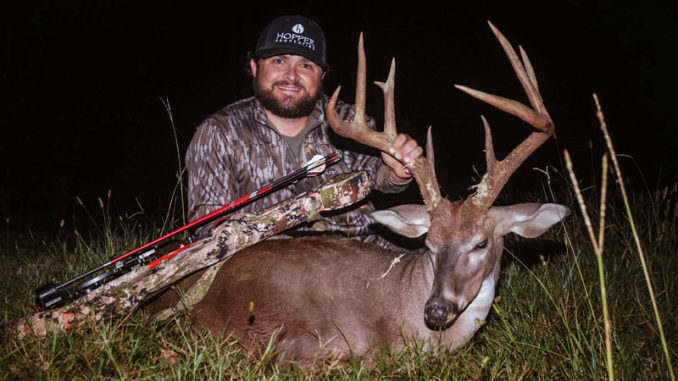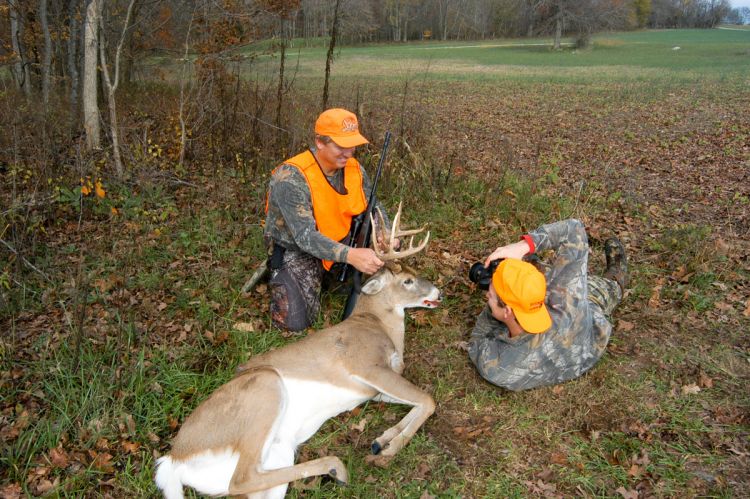
Take pictures that really capture that special memory
So you’ve killed a monster buck. Now what?
You could just clean the deer and move on with your life — but how will you remember that special moment?
Or, even better, how will you get your image run in your favorite outdoor magazine (which you’re currently reading, of course).
That’s where a good photo comes into play.
Unfortunately, with the proliferation of cell-phone cameras, it seems few people even give a thought to capturing nice images: They just point their cell phone and snap a quick shot.
No worries about shaking hands, low light or what is in the image.
That often leads to regret down the road, when you look at the image and realize it just doesn’t do justice to the subject matter.
But all it takes is a bit of planning to have an image you can proudly hang on the wall — and at least have a shot at the cover of Louisiana Sportsman.
Here are some tips to take better photos.
1) Dump the cell phone — No, you don’t have to throw it away, but don’t count on getting a great image from your cell phone.
I know, I know, the commercials show all those amazing images from cell phones, but be honest: When is the last time you captured an image anywhere close to that quality using your cell phone?
Never.
So grab an actual camera. I use a professional-level Nikon DSLR, but that’s just because I’m a photo snob and have stepped up over the years. The reality is that even today’s kit DSLRs and point-and-shoots can take really great images.
And you can get one to put in your pack or boat for very little.
2) Plan ahead — Make sure your battery is charged up and you have enough room on your memory card.
3) Know what the subject is — I can’t tell you how disappointing it is to receive a photo of a great deer only to discover that whoever took the shot apparently thought capturing the cleaning shed, the camp, the forest behind the camp and everyone’s ATVs was important. The result is that the deer head (which is the really important part) is so small that we can’t use it.
So get up close and frame the shot so all that clutter doesn’t show.

4) Pick your background — It’s related to the previous tip, but it only takes a minute or two to move a deer to clean up the background.
I like to drag the deer over to the woods next to the camp and use that as a background.
5) Clean up a little — Deer hunting is a bloody sport, but you don’t have to take a photo with red stuff streaming from a deer’s nose and gore pooled under the head.
You can use a rag or paper towel, or just use some leaves, to clean off all that blood.
6) Don’t just point and shoot — There’s secret to making that deer look impressive, and it’s really simple.
What you want to do is get as close to the subject as your camera/lens will allow. The closer you get, the bigger the subject looks.
I know: I just outed one of the “secrets” to outdoor photography, but it’s really just that simple.
My go-to is a 20mm Nikon lens, which is really wide and allows me to get inches from the subject while still getting the hunter/angler in the shot.
The wider the lens (which means the lower the number) the closer you can get to a subject, in general.
Of course, you have to balance a few things to ensure the image isn’t just of deer head.
Make sure you can see the hunter’s face. That might mean backing up a bit or repositioning the subject a little.
And for the love of all that’s holy, don’t have the hunter stiff-arm the anglers. Instead, ensure the angler keeps his elbows bent.
You want the image to look natural.
7) Get the right angle — This is vitally important with deer. I never stand up when taking a photo of a proud hunter and his kill.
Instead, I usually lay down so I’m eye level with the deer. This makes the deer the center of attention.

8) Use a flash — I ALWAYS use a flash. Always. Every time. Even when the sun is bright. Particularly when the sun is bright.
Can I emphasize the importance of flash more strongly?
The trick here is to position the sun at a 45-degree angle to the subject, which allows the hunter or fisherman to look into the camera without squinting.
So pop up that flash — and if you have a couple hundred dollars laying around you can add speedlight to your DSLR (which will only make the images even better).
You have to watch the shadows, but a flash will immediately increase the quality of your images.
9) Stabilize the camera — Nothing ruins a shot like hand shake. And I don’t care what “professional” photographers say, everyone’s hands shake.
So ensure your elbows are held tight to your body, or prop on the ground or a tree.
That way, when you take the shot, your camera will be steady and the image will be sharp.
10) Smile — You enjoyed killing that deer, right? You smiled after you saw the beautiful sight of that deer piled up, I’m sure.
But for some reason, many people think they need to look serious in photos. That makes it look like their mad.
So smile and let everyone know how much you enjoy the sport.


